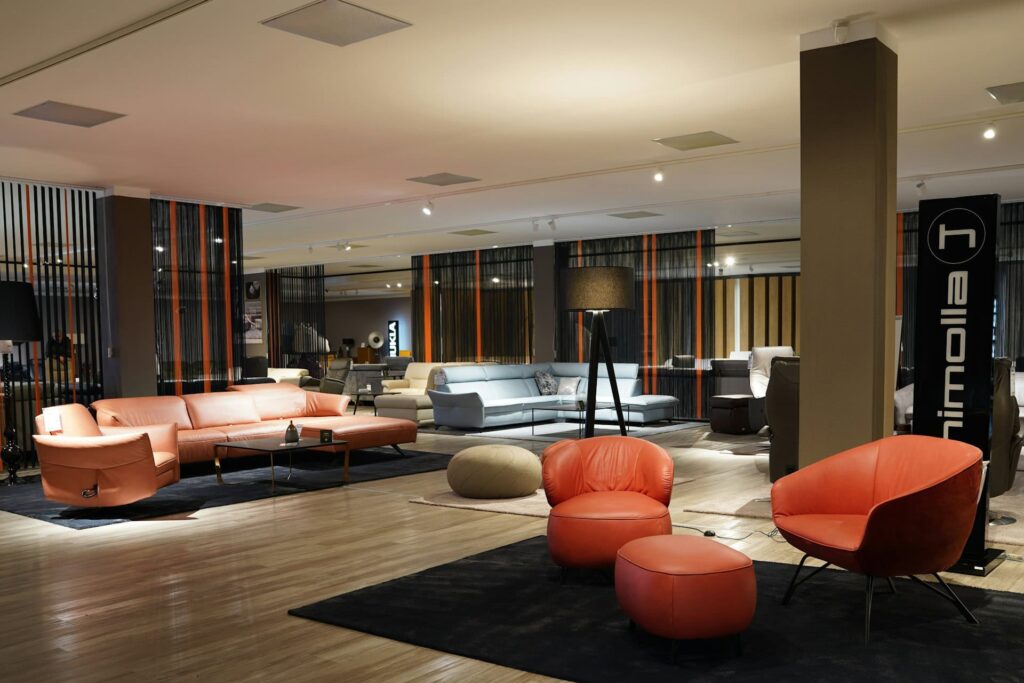Lots of people are interested in interior design or interior decorating online training because they dream of starting their own business. And one of the most common questions we get here at Alna Design is: How do I charge for my services?
Let’s clear things up by answering these questions:
- Does the cost of hiring an interior decorator/designer vary by location?
- How can an interior decorator/designer increase their rates?
- How to charge? What are the main options?
- What other services can an interior decorator or interior designer charge for?
1. Does the cost of hiring an interior decorator/designer vary by location?
The fees an interior designer or decorator can charge vary depending on where they work. It’s definitely possible to charge more in large cities or affluent areas compared to smaller towns or rural areas. For example, hourly rates in big cities are often 10 to 20% higher. But contrary to what you might think, this isn’t a bad thing. The cost of living for residents follows a similar pattern. While a designer might earn less outside of major urban centers, their expenses for things like housing and food will also be lower. So, overall, things tend to balance out.
2. How can an interior decorator/designer increase their rates?
Here are some ways an interior designer or decorator can justify increasing their rates:
Gain more experience
The more experience a professional has, the more they can charge. Taking on diverse projects, building a strong portfolio, and getting positive client testimonials all contribute to increased expertise.
Specialize in a niche
Focusing on a specific area of interior design, such as sustainable design, luxury homes, or commercial spaces, can allow you to command higher fees.
Alna Design’s online interior design and decorating course gives you the chance to specialize in several niches that are in high demand: French luxury interior design, sustainable design, and home styling.
Offer premium services
Providing additional services like project management, 3D rendering, custom furniture design, or sourcing unique materials can justify higher rates.
Improve your skills
Continuing education, attending workshops, and staying updated on the latest design trends can make a decorator more valuable and allow them to charge more.
With Alna Design, you can choose from a variety of courses to continuously learn and develop new skills.
Build a strong brand
A strong online presence, professional website, and active social media accounts can help attract clients and justify higher prices.

Network and market effectively
Building relationships with other professionals in the industry and actively marketing their services can increase demand and allow for higher rates.
Demonstrate value to clients
Clearly communicating the value they bring to a project, such as increased property value, improved functionality, or enhanced aesthetics, can help justify higher fees.
Confidently present their pricing
Presenting their rates with confidence and clearly explaining their pricing structure can help clients understand the value they offer.
By focusing on these strategies, you can increase your rates and build a successful business.
3. How to charge? What are the main options?
Here are some ways interior designers and decorators can charge for their work:
The Discovery call
This initial conversation is all about understanding your potential client‘s needs and expectations for their project. This call should always be free, as it allows you to assess the project scope and determine whether it’s a good fit for you. It’s also the stage where you’ll present a proposal or quote for your services. To save time and ensure I gather all the necessary information, I use pre-designed questionnaires that I send to potential clients. Their responses help me create a tailored quote and decide if I want to take on the project. Alna Design’s shop offers affordable access to these valuable diagnostic tools.
Hourly and daily rates

Charging by the hour is common for the time spent planning, researching, and designing. As mentioned earlier, hourly rates can vary significantly based on experience and location. I recommend charging around $100 per hour if you choose this billing method. Personally, I prefer charging by the day, as it simplifies cost calculations and clarifies the time dedicated to each task. A day’s work should not be charged at less than $400. In my opinion, if you’re marketing yourself within a specialized niche like luxury French design or sustainable design, you should start by charging around $600 per day.
Flat fees
Some interior designers and decorators charge a fixed rate listed on their website for decorating each room. This approach seems inappropriate to me because the same room, such as a living room, for example, may require more or less work depending on its complexity. Therefore, you could often end up at a disadvantage.
Charge by phase
In my view, this is the best way to charge for interior design and home decorating services. When preparing a quote, I break the project down into distinct phases:
- Initial consultation & site analysis: meeting the client, understanding their needs, and assessing the space.
- Design concept development: creating mood boards, color palettes, and initial design concepts.
- Space Planning & layout: developing detailed floor plans and potentially 3D renderings.
- Furniture & material selection: sourcing and selecting furniture, fabrics, and other décor elements.
- Project management (if applicable): overseeing the project, coordinating with contractors, and managing timelines.
I set a price for each phase based on the estimated time involved. This approach provides transparency for the client, who can then make payments in installments at the end of each phase. To ensure commitment, I require a 50% deposit at the start of each phase.
What other services can an interior decorator or interior designer charge for?
As you step into a career of interior designer or interior decorator, it’s important to think beyond the traditional payment for services rendered. Diversifying your income sources is key to building a stable and potentially more lucrative business.
Purchase of furniture
Most professionals especially in United-States add a markup to the furniture, materials, and decor they purchase on behalf of their clients. The percentage depends on the partnership terms you have with each supplier. Generally, suppliers offer a 15% discount to interior designers or decorators.
For my part, in order to be fair to my clients, I charge a slightly lower daily rate when this task is entrusted to me because I know I will also make money from the sale of furniture, and I believe that a service should be win-win.

Workshops
Expert professionals have the opportunity to conduct workshops, imparting their valuable knowledge to enthusiasts or clients keen on DIY decorating yet in need of some direction. Opting for a professional’s guidance not only streamlines the process but also offers more reliable and refined insights compared to navigating through countless unreliable websites.
Affiliate Marketing
By recommending products through a blog or social media and using affiliate links, interior designers and decorators can earn commissions on sales made through those links.
Speaking Engagements
As an expert in your field, you can earn fees by speaking at industry events or home shows.
What is your opinion ?
We’d love to hear your thoughts! Please take a moment to answer our quick survey:

More from the blog
Nature Takes Center Stage in 2025 Decor
Read moreFeb
2025 Interior Design Trends
Read moreJan
Should you choose a certifying program when training in interior design or interior decoration?
Read moreNov